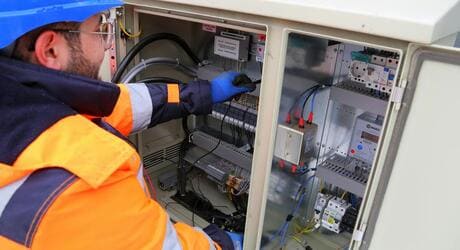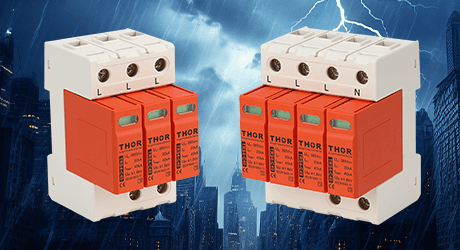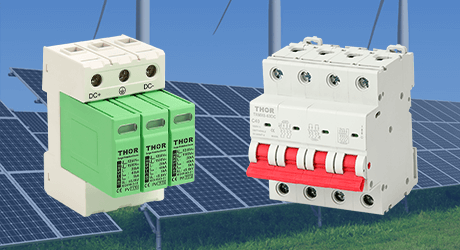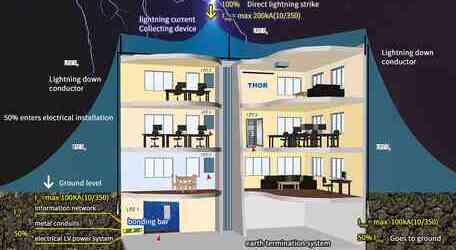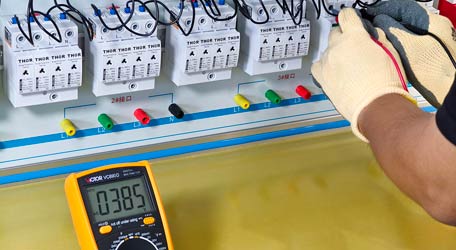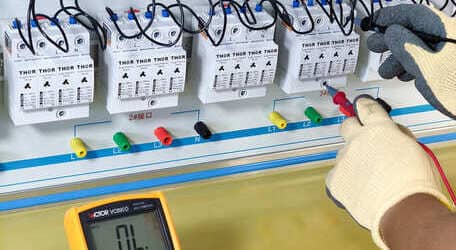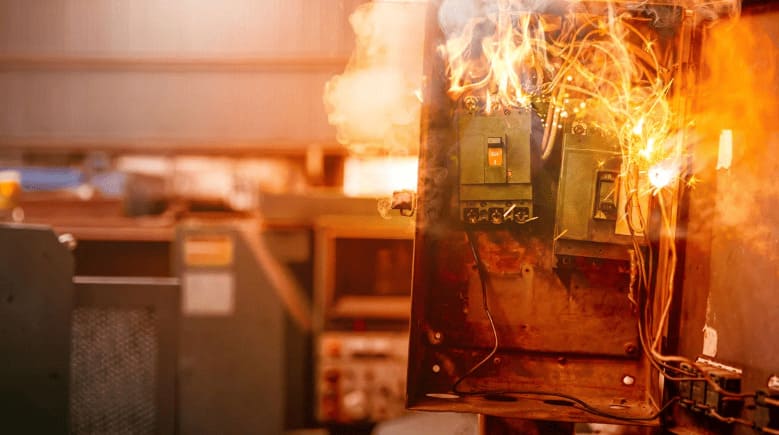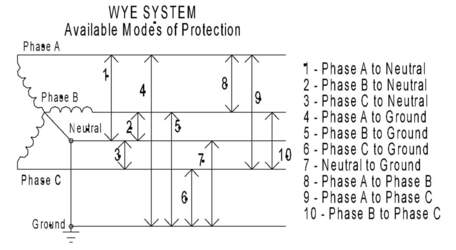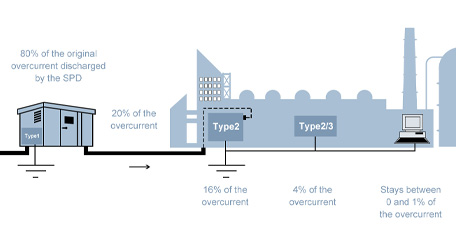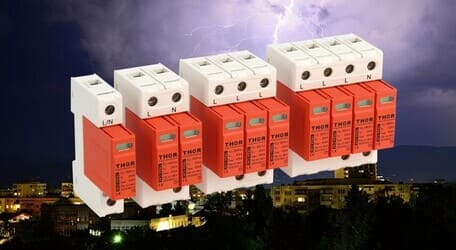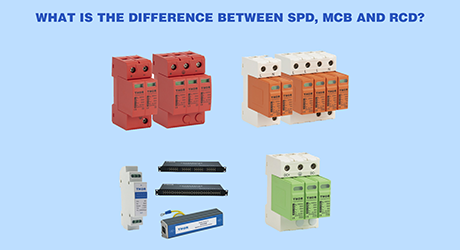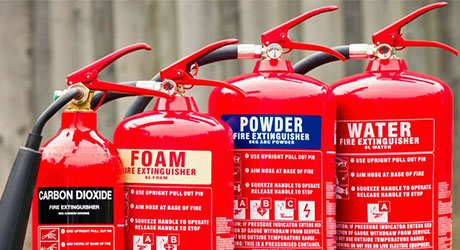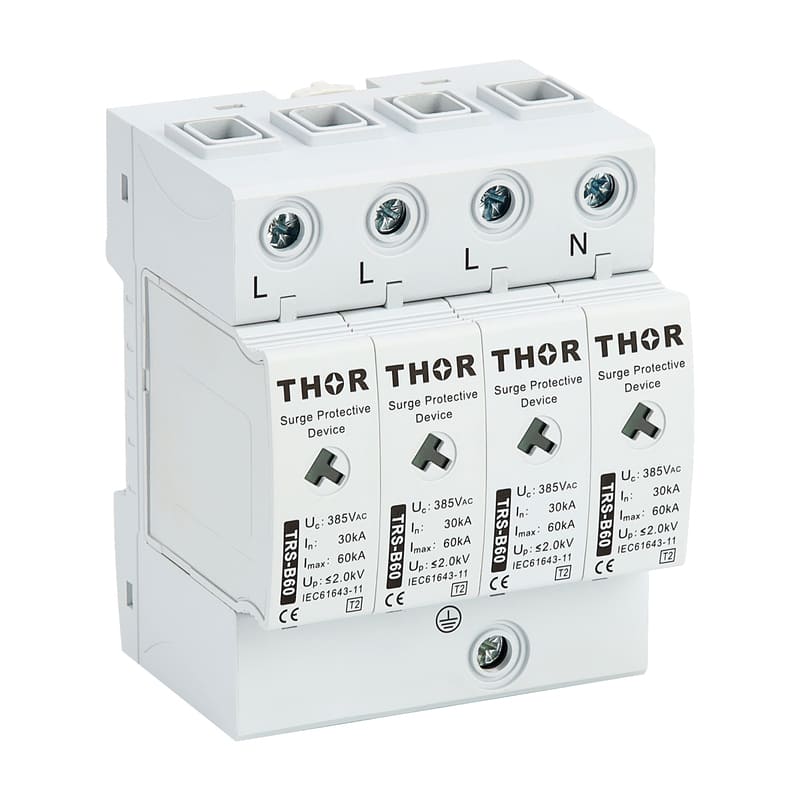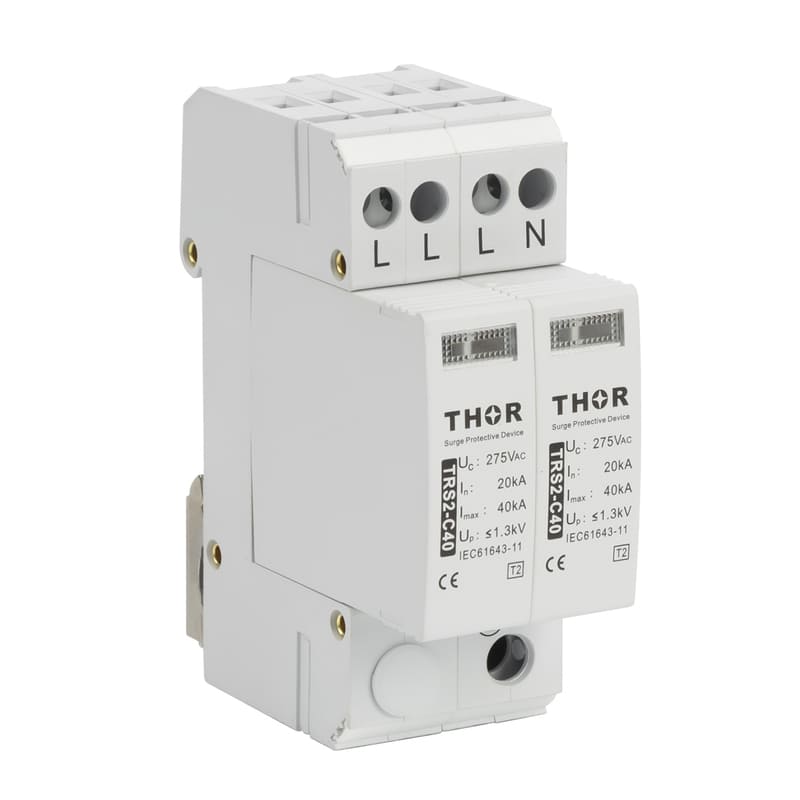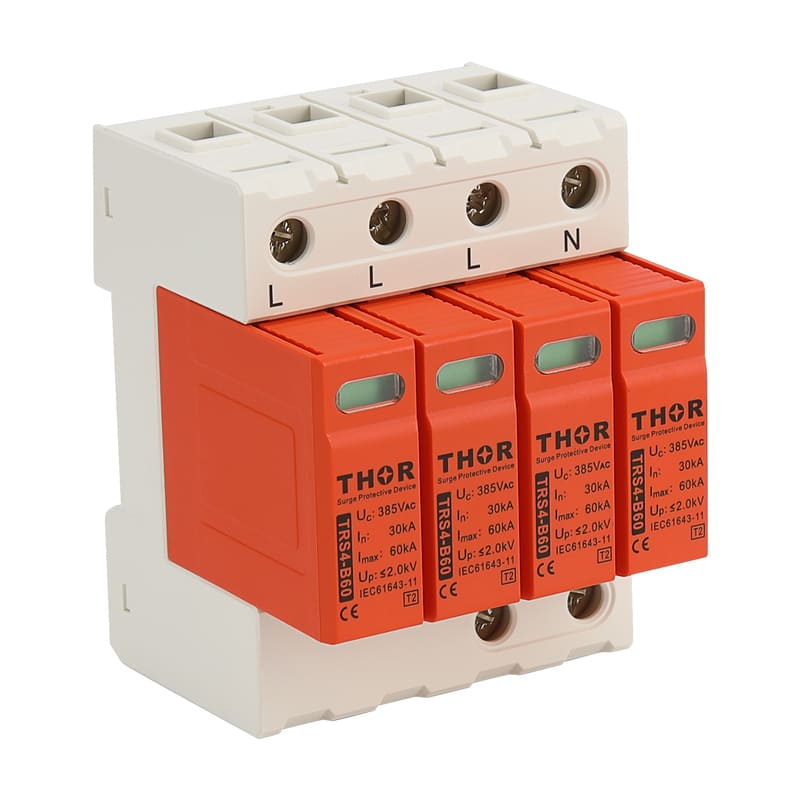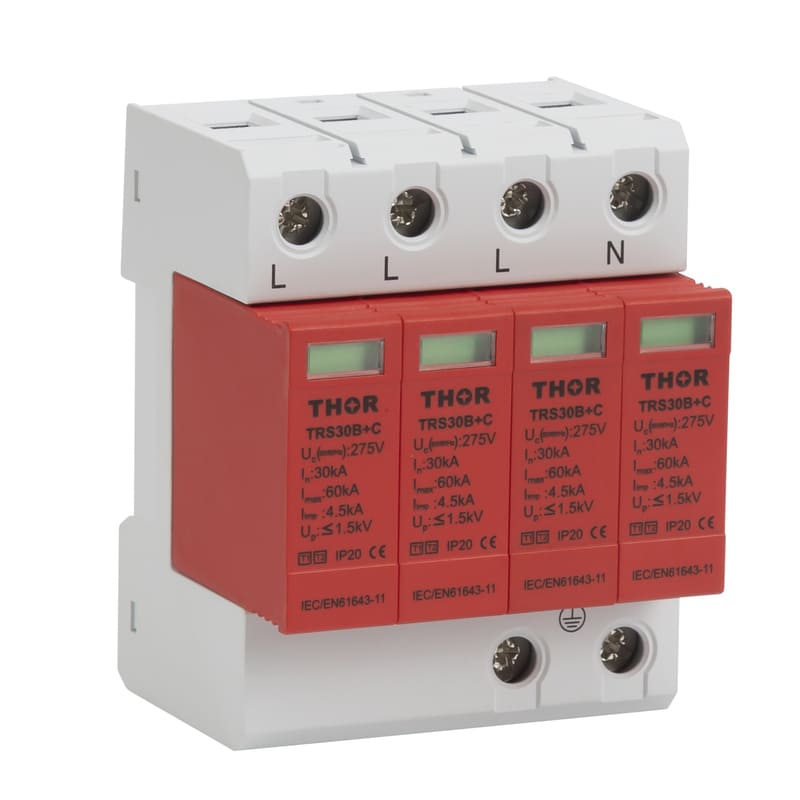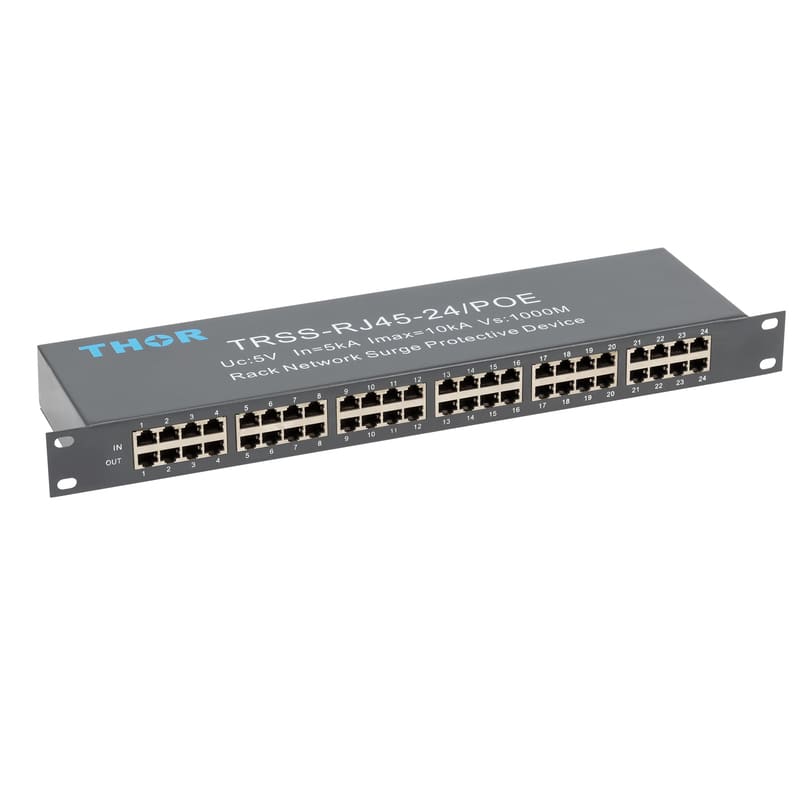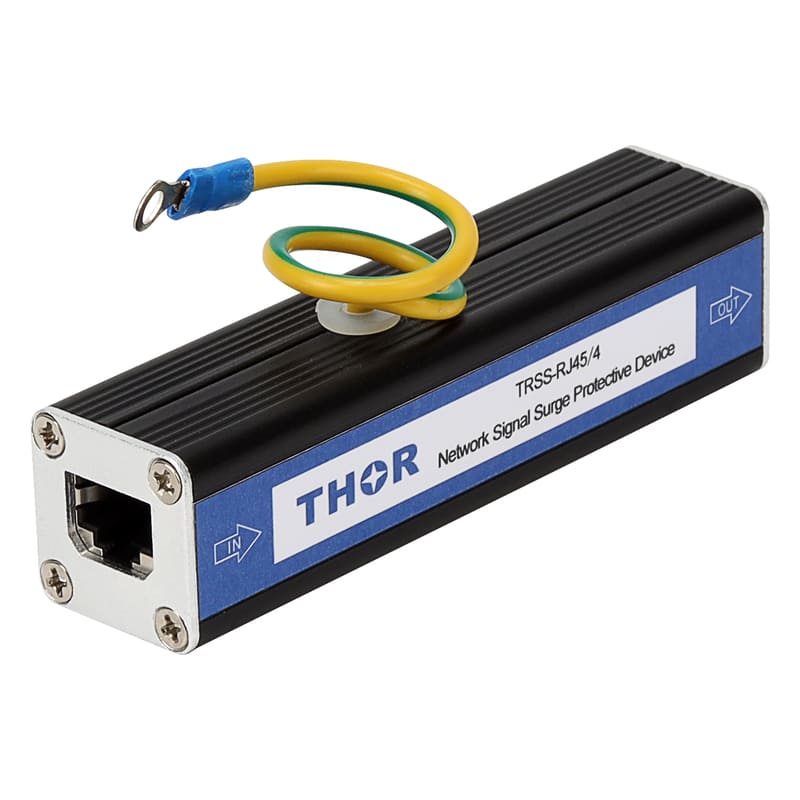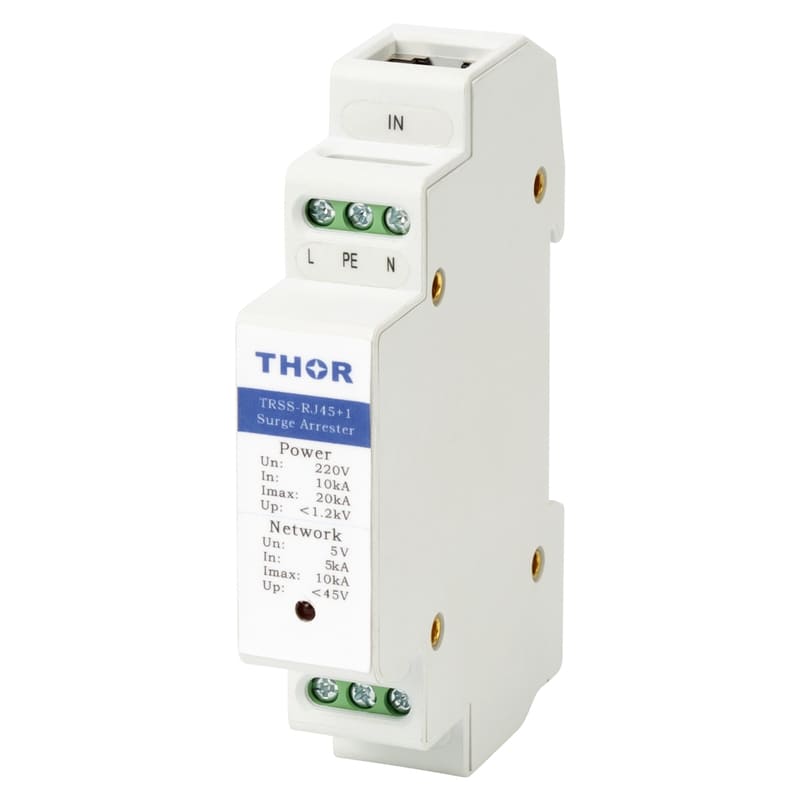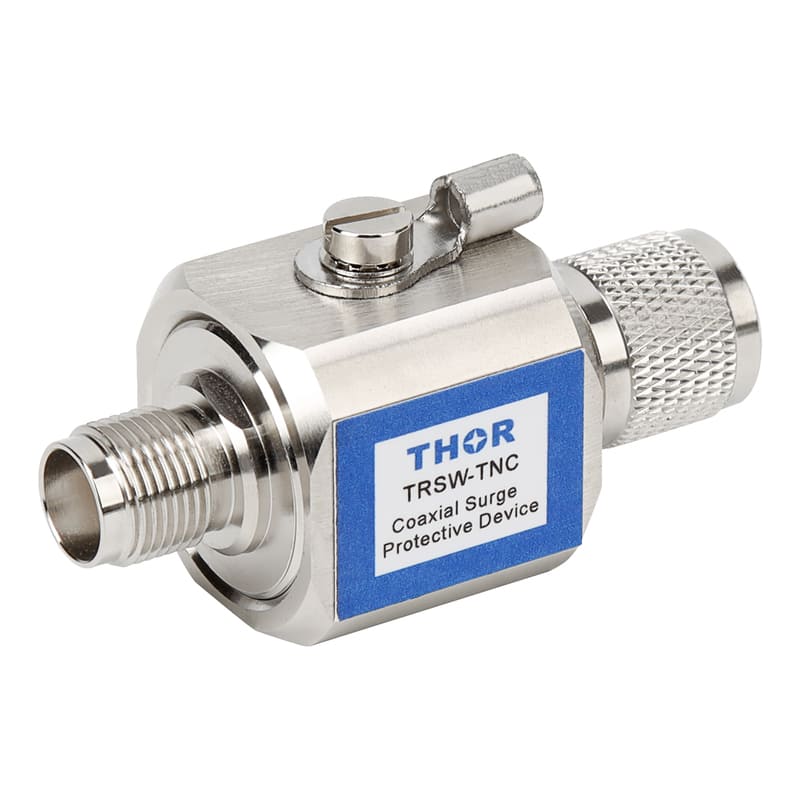Glass discharge tube
Glass discharge tube (SPARK) is also a powerful discharge tube, commonly known as detonator, which is the latest lightning protection device. The glass discharge tube is composed of two electrodes separated by a certain distance in a glass tube filled with inert gas. The gas filled in the middle of the glass discharge tube is mainly neon or argon, and maintains a certain pressure. When the voltage at both ends is lower than the discharge voltage, the gas discharge tube is an insulator; when the voltage at both ends rises above the discharge voltage, an arc discharge occurs, and the gas is ionized and discharged from high impedance to low impedance, making the two The terminal voltage drops rapidly. When the glass discharge tube is impacted by transient high energy, it can change the high impedance between its two poles to low impedance at a speed of 10⁻⁹s, and pass a surge current of up to a thousand amperes. Glass discharge tubes are widely used in power supply, data, information reception, medical equipment, communication, consumer products, high-frequency circuits, 3G communication products, communication base station equipment and other static communication and home appliances and other products.
Glass discharge tube has the advantages of ceramic gas discharge tube and semiconductor overvoltage protector, including: high insulation resistance, greater than 100MΩ; small inter-electrode capacitance, less than 0.7pF; large discharge current, up to 3kA; high DC breakdown voltage, up to Up to 5000V; bidirectional symmetry, fast response, only a few nanoseconds, no hysteresis of impact breakdown; stable and reliable performance, extremely low voltage after conduction; small size, long life, etc. Its disadvantage is that the DC breakdown voltage is highly dispersed.
The conduction capacity is divided into three categories under different waveforms. According to its 7/20μs wave pulse discharge current IPP, it is divided into three series: BK3 series IPP≥500A, BK2 series IPP≥1000A, BK1 series IPP≥3000A. According to the size of its 8/20μs wave pulse discharge current IPP, it is divided into three series: YP, YS, and YA. The pulse discharge current is consistent with the 7/20μs wave pulse discharge current.
Attention should be paid when using: the glass discharge tube can be used as the protection of the power circuit and the signal circuit; it can be used as the common mode protection or the differential mode protection, but it can only be used in the surge current A place not greater than 3kA. The minimum value of the DC breakdown voltage Vs should be at least 1.2 times greater than the highest possible power supply peak voltage or the highest signal voltage. Where freewheeling is likely to occur, a current-limiting resistor or self-recovery fuse must be connected in series to prevent the glass discharge tube from being damaged due to long-term conduction after breakdown.
For the power supply system, choose YA or YS series for glass discharge tube, choose YA or YS series for data transmission device, choose YS or YP series for antenna device or antenna/signal circuit including movable parts, choose YS and YP series for antistatic device, medical Choose YA, YS or YP series of instruments.

